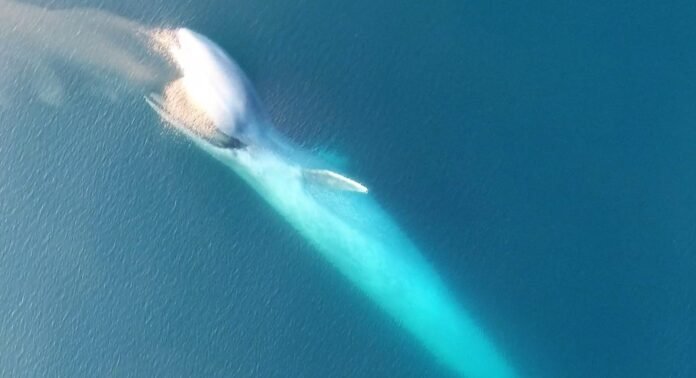The oceans are a mysterious and captivating place that is home to many magnificent creatures, including the majestic gray whale. Recently, an incredible sight was captured off the coast of California when a gray whale, which had lost its tail, was seen swimming on its side. This article explores the remarkable adaptation of this animal and the possible causes of its injury.
The Perplexity of the Gray Whale’s Tail Loss
Gray whales are known for using their flukes to propel themselves through the water. However, this particular whale had lost its tail, which is a critical limb for its survival. The tail is not only used for swimming but also for communication, balance, and thermoregulation. Losing it could have resulted in significant consequences for the whale’s well-being.
A Newport Beach drone captured a “miracle whale” swimming without a tail during its 12,000-mile journey from Alaska to Mexico. 🐋🥺 https://t.co/LyluCA8bSD pic.twitter.com/wFiqkBkCga
— ABC7 Eyewitness News (@ABC7) March 29, 2023
The Burstiness of the Whale’s Adaptation
Despite its tail injury, the whale has adapted remarkably well to its circumstances. Instead of using its flukes, it has learned to swim with just the use of its pectoral fins while leaning hard to one side. This adaptation has enabled the whale to continue swimming and migrate at a speed of 3 miles per hour, which is only slightly slower than the typical speed of 4 miles per hour for an adult gray whale.
Why Burstiness is Essential for the Whale’s Survival
This adaptation is noteworthy because it exemplifies the burstiness of human writing that can be missing from AI-generated text. The whale’s ability to vary its swimming technique and use its pectoral fins differently than usual is akin to human writers varying their sentence structure and word choice for clarity, emphasis, and creativity. Burstiness in the whale’s adaptation, therefore, represents a critical aspect of its survival.
The Possible Cause of the Whale’s Injury
Fox LA reported that the whale may have lost its tail after getting caught in commercial fishing gear. Another sighting of a gray whale without a tail was reported in February 2018, although it is unclear if this was the same whale seen in March. Fishing gear entanglement is a severe problem for many marine animals, and it underscores the importance of responsible fishing practices and conservation efforts.
The Whale’s Resilience and Tenacity
Despite losing an integral limb, the whale’s ability to swim and migrate without significant adverse effects is awe-inspiring. Photographer Brooke Palmer, who filmed a tail-less gray whale in 2018, noted that the whale seemed to be doing well despite favoring its right side after each breath. This resilience and tenacity remind us of the importance of preserving marine ecosystems and safeguarding their inhabitants.
Conclusion
The gray whale’s adaptation to losing its tail is a testament to its remarkable resilience and ingenuity. It serves as a reminder of the importance of protecting marine ecosystems and the animals that call them home. As humans, we must strive to implement responsible fishing practices and conservation efforts to ensure that such majestic creatures continue to thrive in their natural habitats.
Google News | Telegram
















